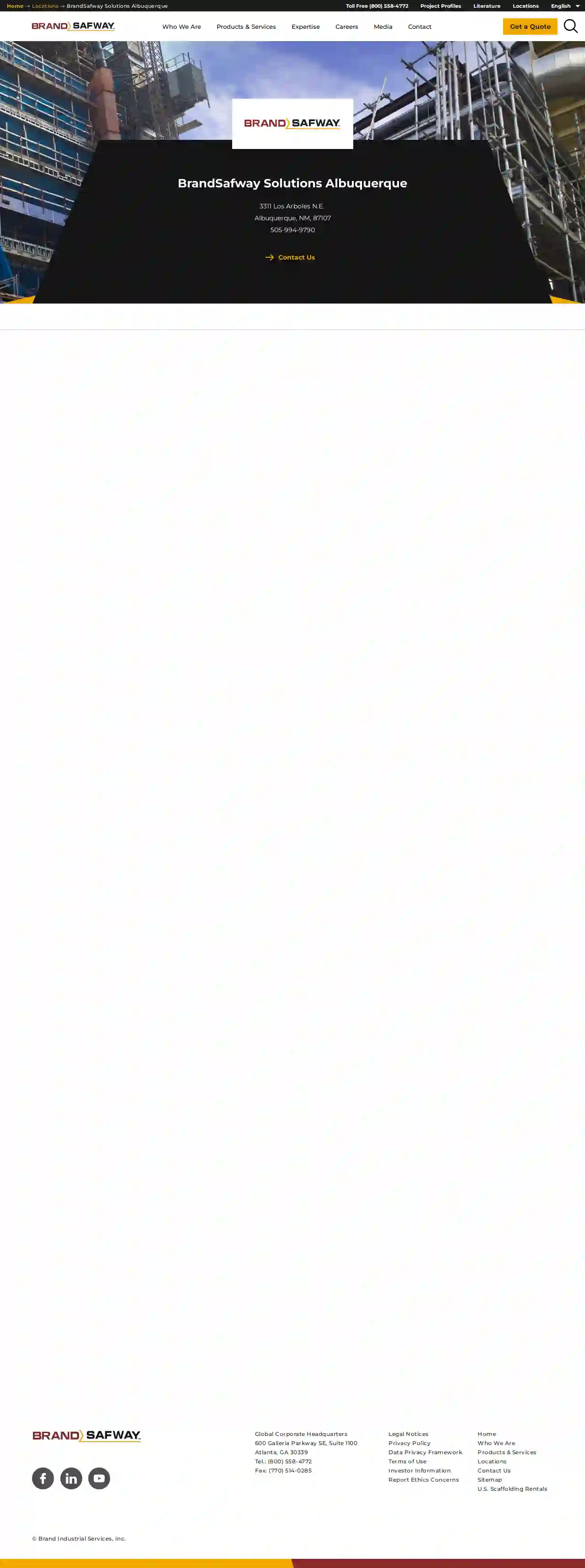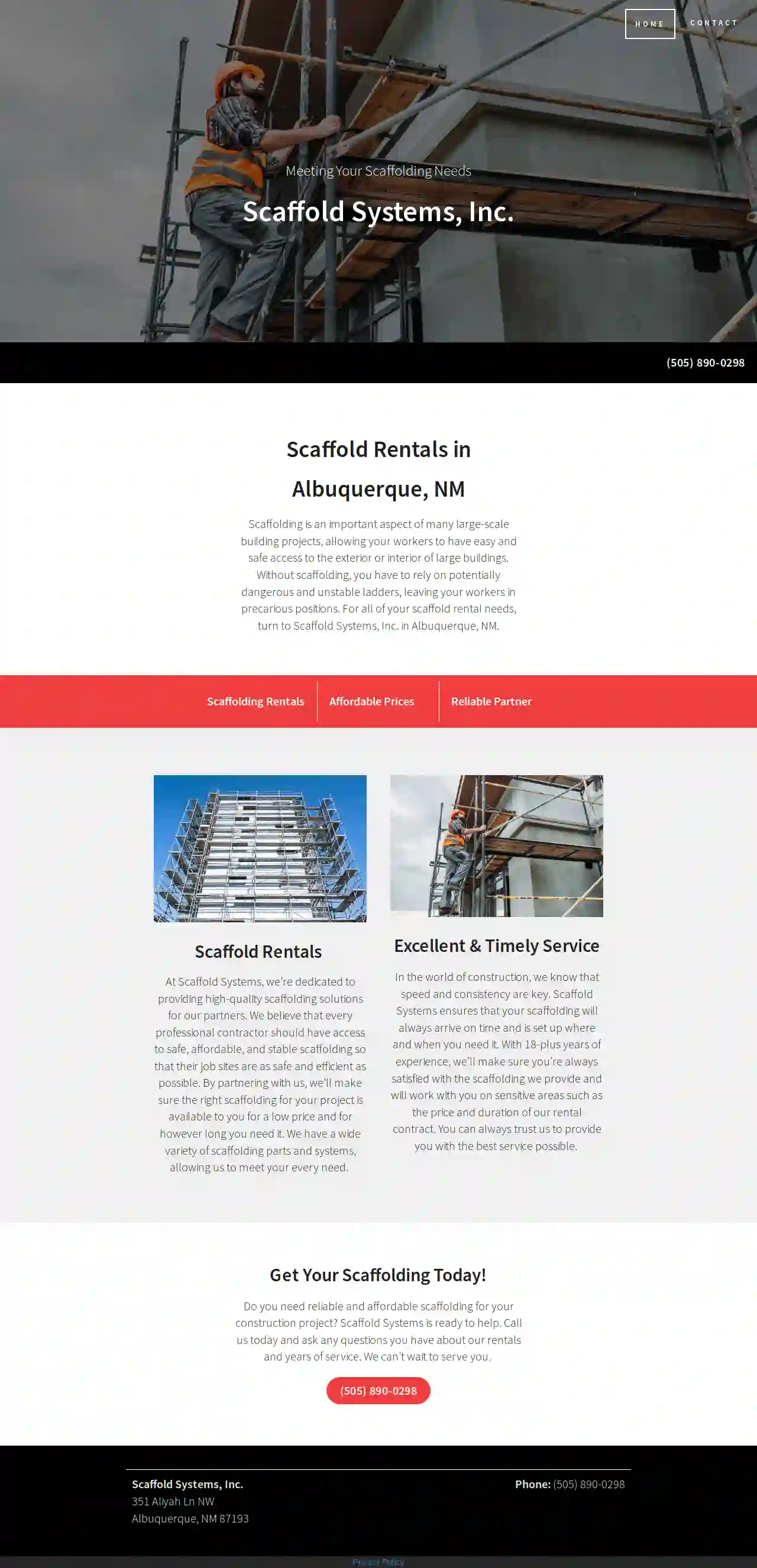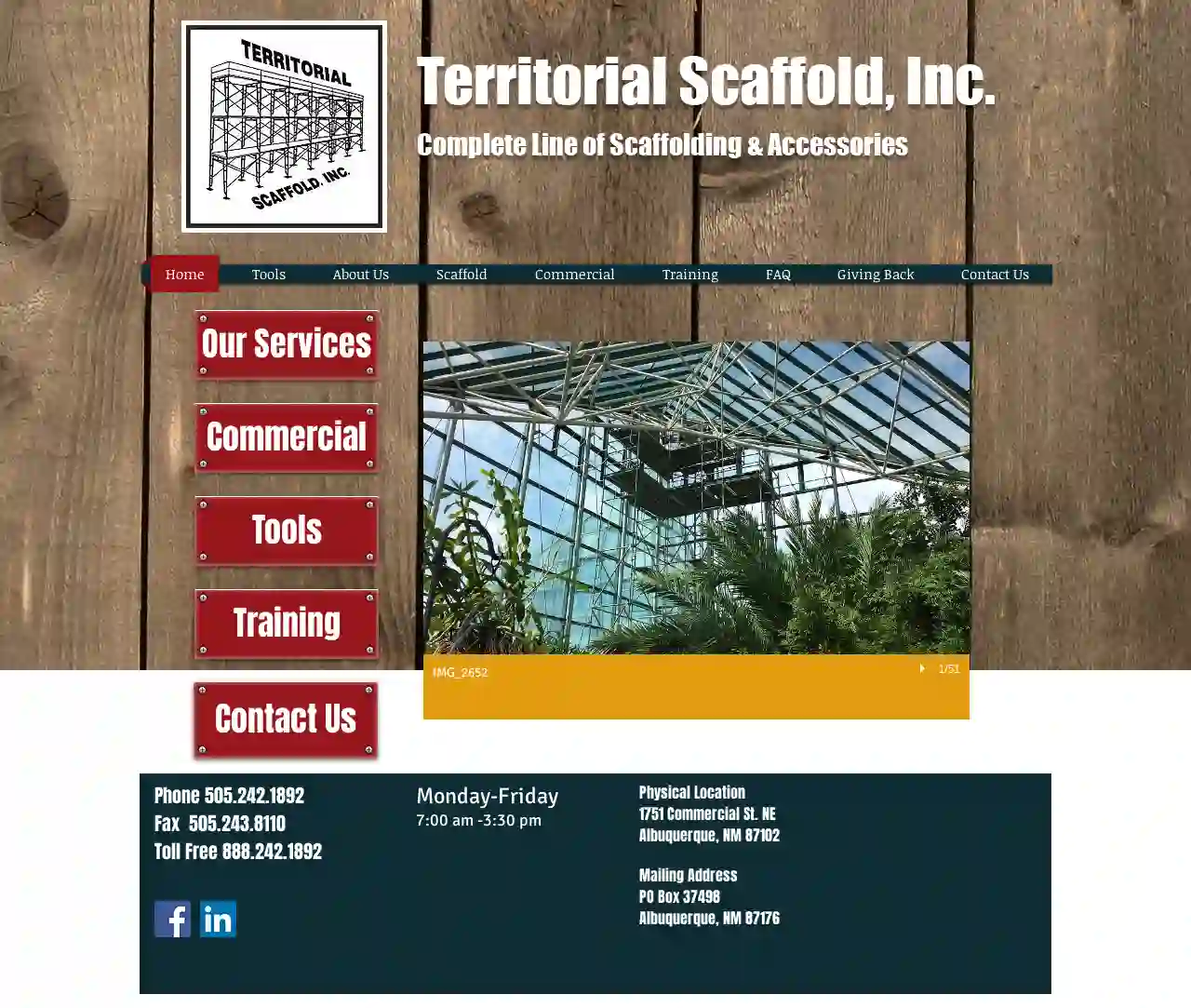Scaffolding Companies Bosque Farms
Find the best Scaffolding Company in Bosque Farms
Get multiple Scaffolding Builders quotes for your project today! Compare profiles, reviews, accreditations, portfolio, etc... and choose the best deal.

BrandSafway Solutions Albuquerque
4.18 reviews1234 BrandSafway Blvd, Albuquerque, 87102, USBrandSafway is a leading provider of access solutions, including scaffolding, aerial work platforms, and forming and shoring equipment. With a strong commitment to safety, quality, and customer satisfaction, BrandSafway offers a wide range of services tailored to meet the unique needs of clients across various industries. Their team of experienced professionals works closely with clients to understand their requirements and deliver customized solutions that enhance efficiency and productivity. BrandSafway's mission is to provide innovative access solutions that ensure safe and efficient project execution, while maintaining a focus on sustainability and environmental responsibility.
- Services
- Why Us?
- Accreditations
- Our Team
- Testimonials
Get Quote
Scaffold Systems Inc
36 reviews351 Aliyah Ln NW, Albuquerque, 87193, USScaffold Systems, Inc. is a dedicated provider of affordable and convenient scaffolding rentals to contractors and homeowners in Albuquerque, NM. With nearly two decades of experience, they offer a wide variety of scaffolding parts and systems to meet every need. Their commitment to safety, efficiency, and customer satisfaction sets them apart as a reliable partner for construction projects.
- Services
- Why Us?
- Gallery
Get Quote
Territorial Scaffold Inc
4.725 reviewsTerritorial Scaffold, Inc., Albuquerque, NM, 1751 Commercial St. NE, 87102, USTerritorial Scaffold, Inc. is a leading provider of scaffolding and accessories, offering a comprehensive range of services including commercial scaffolding, training, and more. With a strong commitment to quality and customer satisfaction, the company operates from its physical location at 1751 Commercial St. NE, Albuquerque, NM 87102, and can be contacted via phone at 505.242.1892, fax at 505.243.8110, or toll-free at 888.242.1892. The business is open Monday through Friday from 7:00 am to 3:30 pm.
- Services
- Why Us?
- Accreditations
- Our Team
- Testimonials
- Gallery
Get Quote- Al
All American Scaffold & Shoring
11 reviewsAlbuquerque, US- Services
- Why Us?
Get Quote
Over 2,353+ Scaffolding Businesses on our directory
Our scaffolding pros operate in Bosque Farms and surrounding areas!
ScaffoldingHQ has curated and vetted the Best Scaffolding Contractors arround Bosque Farms. Find the most trustworthy business today.
Frequently Asked Questions About Scaffolding Companies
- Workers: Consider the number of workers on the scaffolding at any given time.
- Materials: Include the weight of building materials, tools, and equipment being used on the platform.
- Environmental Factors: Factor in potential loads from wind or snow, especially for taller scaffolding structures.
- Experience and Expertise: Look for companies with a proven track record in similar projects, whether it's residential, commercial, or industrial.
- Licensing and Insurance: Verify that the company has the necessary licenses and insurance coverage to operate legally and protect you from liability.
- Safety Record: Inquire about their safety practices and training programs for their employees. A strong safety culture is crucial in scaffolding.
- Reputation and Reviews: Check online reviews and testimonials from previous clients to gauge their reliability and quality of work.
- Professionalism: Choose a company that communicates clearly, provides detailed quotes, and demonstrates a commitment to customer satisfaction.
- Regulations: Local regulations often specify minimum inspection intervals.
- Project Type and Duration: Long-term projects or those in challenging environments may require more frequent inspections.
- Weather Conditions: Severe weather (storms, high winds) can necessitate additional inspections.
- Any Alterations or Modifications: Any changes to the scaffolding structure require re-inspection.
- Mobile Elevated Work Platforms (MEWPs): Scissor lifts, boom lifts, and other MEWPs offer flexible access for specific tasks.
- Mast Climbing Work Platforms (MCWPs): Ideal for high-rise construction, providing a stable working platform that can be raised incrementally.
- Suspended Access Equipment: Ropes and harnesses used for specific tasks like window cleaning or façade repairs.
- Ladders and Step Ladders: For shorter durations and limited working heights, provided they are used safely and appropriately.
What is the weight limit for scaffolding?
How do I find a reputable scaffolding company?
How often should scaffolding be inspected?
What are some alternatives to traditional scaffolding?
What is the weight limit for scaffolding?
- Workers: Consider the number of workers on the scaffolding at any given time.
- Materials: Include the weight of building materials, tools, and equipment being used on the platform.
- Environmental Factors: Factor in potential loads from wind or snow, especially for taller scaffolding structures.
How do I find a reputable scaffolding company?
- Experience and Expertise: Look for companies with a proven track record in similar projects, whether it's residential, commercial, or industrial.
- Licensing and Insurance: Verify that the company has the necessary licenses and insurance coverage to operate legally and protect you from liability.
- Safety Record: Inquire about their safety practices and training programs for their employees. A strong safety culture is crucial in scaffolding.
- Reputation and Reviews: Check online reviews and testimonials from previous clients to gauge their reliability and quality of work.
- Professionalism: Choose a company that communicates clearly, provides detailed quotes, and demonstrates a commitment to customer satisfaction.
How often should scaffolding be inspected?
- Regulations: Local regulations often specify minimum inspection intervals.
- Project Type and Duration: Long-term projects or those in challenging environments may require more frequent inspections.
- Weather Conditions: Severe weather (storms, high winds) can necessitate additional inspections.
- Any Alterations or Modifications: Any changes to the scaffolding structure require re-inspection.
What are some alternatives to traditional scaffolding?
- Mobile Elevated Work Platforms (MEWPs): Scissor lifts, boom lifts, and other MEWPs offer flexible access for specific tasks.
- Mast Climbing Work Platforms (MCWPs): Ideal for high-rise construction, providing a stable working platform that can be raised incrementally.
- Suspended Access Equipment: Ropes and harnesses used for specific tasks like window cleaning or façade repairs.
- Ladders and Step Ladders: For shorter durations and limited working heights, provided they are used safely and appropriately.